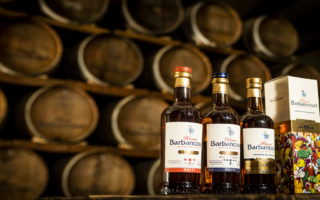World of the oyster
The sheer scale and variety of France’s produce were enough to place it on the gastronomic map –even before its national cuisine was added to the Unesco World Heritage list in 2010.
Fans of oysters have often pointed to France as one of the best sources of the bivalve mollusc; it has been estimated that around 90 per cent of Europe’s oyster production takes place in l’Hexagone, with the coastal areas of Brittany, the southern end of the Atlantic coast, the Mediterranean and Corsica as hotspots for ostréiculture (oyster farming).
The Bassin de Marennes-Oléron in the Poitou-Charentes region has been famed for its oyster production since Roman times, thanks in large part to the claire oysters that have enjoyed renown with local residents and international fans. Unlike their open-sea farmed counterparts, these delicacies are reared in the shallow claires (oyster beds) set in to the coastline, which allows a more rounded mineral flavour to develop. They are grown in accordance with the natural rhythms of the area’s eco-system using traditional techniques developed by charentais families down the centuries.
Although it was once said that oysters were safe to eat only in months with the letter ‘r’ in their English and French names, today they are enjoyed all year round. Beginning life in the summer as a naissin (newborn), each oyster attaches itself to a fixed surface from which to develop and grow.
The Marennes-Oléron and nearby Arcachon bassins are the only two of their kind in France where oysters reproduce naturally – in all other areas, young oysters are brought from Poitou-Charentes waters at around six months old and placed in their new homes to reach maturity as a Breton, Mediterranean or Corsican oyster.
The following summer the détroquage procedure takes place, when the oysters are removed from their fixed surface and placed in the claires. They are then matured for anything from months to several years; during this period the ostréiculteurs carefully watch their charges in the face of threats from predators and stormy weather.
The difference between types of claire oysters is often misunderstood. There are four varieties: pousses en claire, which are grown entirely in the claires from naissins (new-borns), and, in descending price order, fines de claires vertes, spéciales de claires and fines de claires, which are all matured in the claires for varying times.
Pousses en claires are prized for their rich flesh and long flavour, while fines de claires are less fleshy. Fines de claires vertes come into contact with navicule bleue algae, which give the oyster’s yellow gills their distinctive green tint. The spéciales de claires are set apart by their firm flesh and balance of sweetness and salt.
Ranked from 0 to 5 in descending order of size (a fine de claire no. 4 oyster would, for example, weigh between 46 grams and 65 grams), they are best enjoyed sea-fresh, shucked from the maritime waters and served as nature intended.
Share to: Facebook Twitter LinkedIn Email


